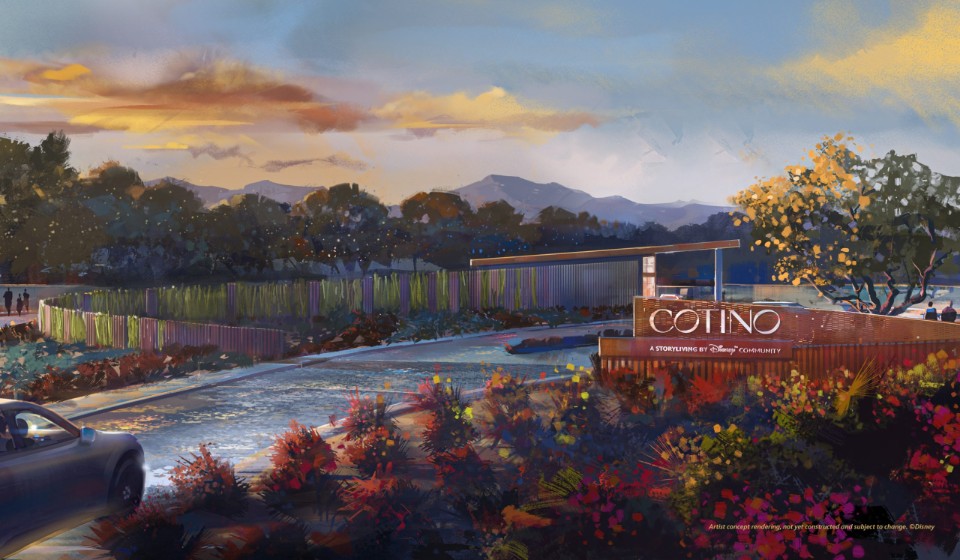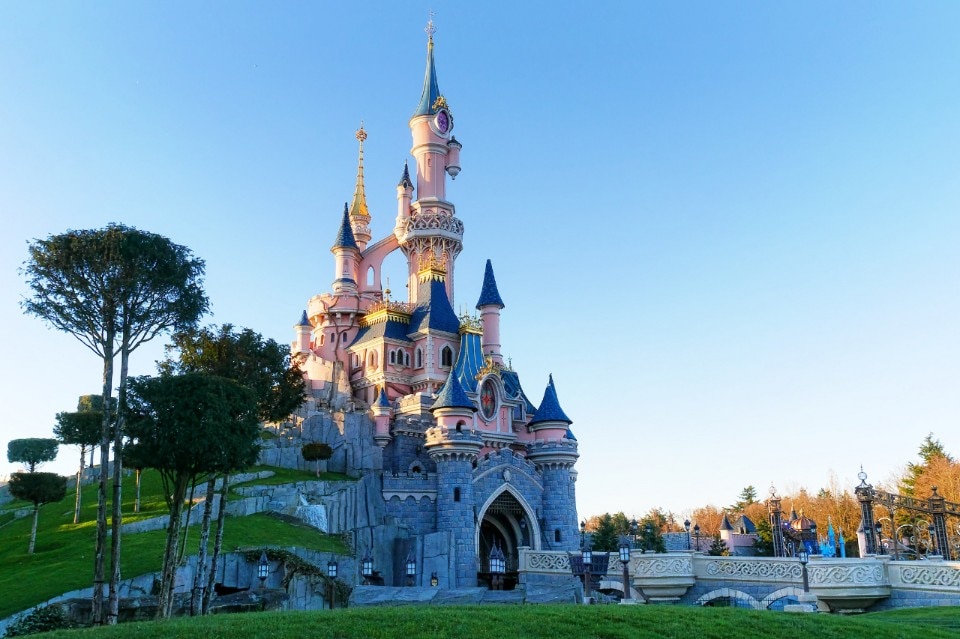Imagining living in a magical place, or simply an unreachable one, which for various reasons is out of our grasp, is perhaps one of the most common daydreams. And who hasn’t, at some point, wished they could live in a Disney movie?
Probably no one. That’s why theme parks exist, but why not offer the possibility of a “themed” life, characterized by a highly recognizable aesthetic, composed of specific shapes and colors? This is how Cotino was born, a “Storyliving by Disney community,” as stated on the large sign announcing the creation of the location, developed by the entertainment corporation on a square mile of desert near Palm Springs.

Cotino will feature 2,000 themed homes, starting at about $1 million, arranged around a nearly 10-hectare turquoise lake, which will maintain an Avatar-blue shade all year long, thanks to patented Crystal Lagoons technology. Additionally, there will be a club inspired by the mansion from The Incredibles 2, which will host themed art classes and Disney-inspired dinners. Cotino promises that everything will be infused with the company’s special brand of magic, with a dedicated staff of cast members and creatives, evoking a story straight out of George Saunders.
Storyliving by Disney – launched in 2022, with another 4,000-home development on the way in North Carolina – represents the latest chapter in the world’s largest entertainment company’s expansion beyond the screen, which even includes a private island in the Bahamas. Disney had already experimented with similar pilot projects in Florida, with utopian plans for Epcot (Experimental Prototype Community of Tomorrow) and the town of Celebration.

According to Oliver Wainwright of The Guardian, the company’s experience division is now focusing on new projects due to the decline in cinema and streaming revenues in recent years. The idea is to leverage Disney’s emotional connection with its fanbase, providing a community so attached to the brand that they will likely make one of the most significant investments of their lives, with branded services “forever.”
On one hand, Disney has drawn inspiration from architecture to shape its scenarios and on the other, it’s now turning its animated designs into reality.
Beyond purchasing the house, residents are asked to pay $20,000 to join the neighborhood club and $10,000 annually to continue enjoying a perfectly themed atmosphere. It’s true that even in any premium residence, the annual fees are not much lower.
On one hand, Disney has drawn inspiration from architecture to shape its scenarios – it’s no coincidence that its logo is the iconic castle – and on the other, it’s now turning its animated designs into reality. With a series of color, aesthetic, and structural protocols, like “Go Away Green” used to make certain elements “disappear” from the context, and “Blending Blue,” the same concept but for structures that stand out against the sky, or the trick of progressively lowering the building’s floors to create a “fairytale” effect.
Disney has always known that people “just” wanted to be happy, and it has undoubtedly created a powerful universe. “It will be a place of hopes and dreams, reality and fantasy all in one,” said Walt Disney when launching Disneyland, the home of “everything your heart desires.” It’s no coincidence that the attraction “Monsanto House of the Future” in 1957 showcased an arsenal of futuristic household appliances for the time, which would become widespread in homes much later, like dishwashers, microwaves, video call cameras, electric toothbrushes, and many other plastic items.

Everything had to be designed to preserve the “illusion.” So, Disney built an intricate network of underground corridors to allow actors and performers to move from one world to another, to dispose of waste via suction, and to house storage rooms, kitchens, and other technical spaces necessary for the park.
As the Pulitzer-winning journalist and architecture critic Paul Goldberger wrote on the New York Times after a visit to the amusement park in the 1970s, Disney World Florida boasted “an assortment of technical innovations” that made it probably “the most important urban planning laboratory in the United States.” Reality seems overwhelming, and to cope with it, we double down, demanding, at any cost and any trick, that everything is fine, hiding whatever offends our sensibilities underground. And it appears to work, as it has worked for decades. Form follows function, even in this case, if the function is to live within the illusion of happiness.

The Trafic parquet collection: a new language for spaces
Designers Marc and Paola Sadler draw on now-extinct urban scenarios to create an original and versatile product for Listone Giordano.

























